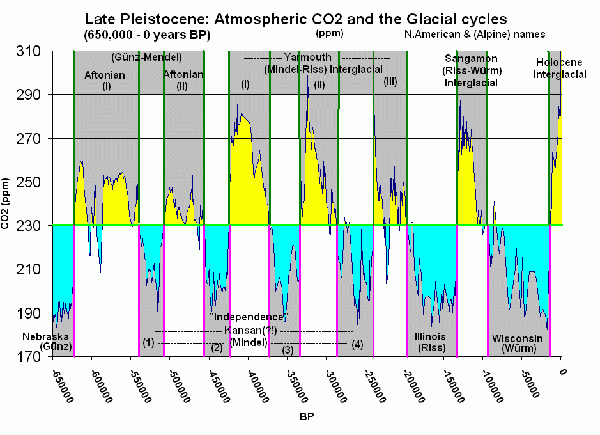Global Paleogeography
Historical Look at Changes in Carbon Dioxide Concentrations
| When there is extensive ice cover, the earth’s albedo effect is high. The ice reflects radiation back into the atmosphere. The more ice that reflects radiation, the colder it gets, so more ice forms, reflecting even more radiation. This is called a “positive feedback”. | Cold water can dissolve more CO2 than warm water (think of opening a can of warm vs. cold soda), so when the global temperature is cold, there is less atmospheric carbon dioxide because the ocean soaks it up. This is another positive feedback. | Positive feedbacks lead to extreme variations in climate. In modern times, since the industrial revolution about 150 years ago, people have burned fossil fuels that have added more CO2 into the atmosphere. This has led to warming and started a positive feedback in the direction of further warming. Scientists are concerned that this could lead to harmful levels of climate change. |

The yellow areas reflect periods between glacial cycles when global temperatures were warmer and there was significantly less ice cover. Notice that CO2 levels are high.
The blue areas reflect periods when global temperatures were colder and there was greater ice cover. Notice that CO2 levels are low.
Notice that low carbon dioxide levels correlate with glacial periods and high carbon dioxide levels correlate with interglacial periods.
